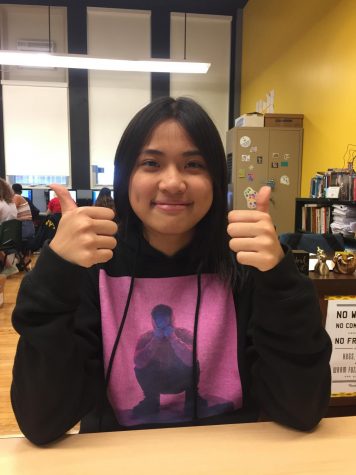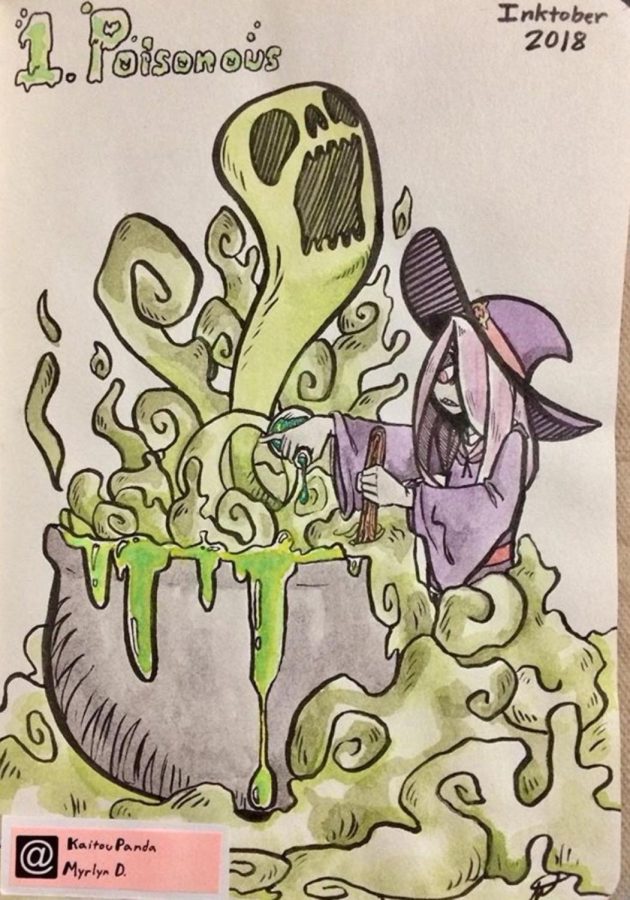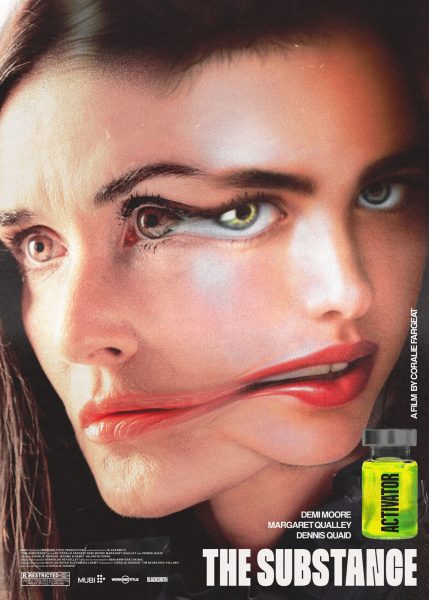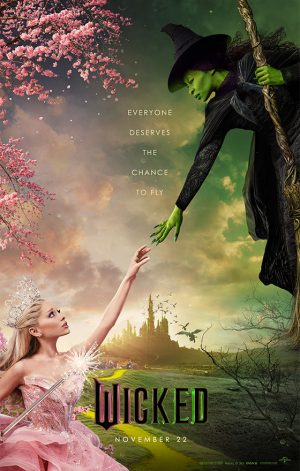Inktober: An Artist’s Fall Tradition
Every year, thousands of artists come together to give their own perspectives on unique prompts every day during the month of October. People all over the world are encouraged to participate by sharing artwork on Instagram, Twitter or Tumblr.
The month deemed “Inktober” started in 2009 by a self proclaimed writer, illustrator and teacher, Jake Parker. His website that hosts the prompts, merchandise and other showcased artworks is www.inktober.com.
The daily prompts are vague and up to the artists’ interpretation. Examples from previous years have been “Transport,” “Teeming,” and “Filthy.” Mrylyn Duong, Div. 957, has been participating in Inktober since 2017. She has been drawing since she was in elementary school and started by copying her brother when she saw him drawing.
“The point of Inktober is to improve on your art and practice inking,” Duong said.
Ms. Novak is a new teacher here at Lane, teaching Art 1, Media Crew and AP Studio art. She graduated from Lane in 1996. Her students from Art 1, Megan Camacho, Div. 261, and Delphine Peck, Div. 261, approached her in early October and asked if she was participating in Inktober.
She then decided it would be a good idea to encourage her classes to participate voluntarily, outside of class.
“A lot of the time, students are facing these challenges that are set up for them, in a reward-based system of grades, as opposed to a challenge that may show them a strength they are not aware they might have,” Novak said.
Although it seems like extra responsibility, Novak said that Inktober should be above all, fun. Sometimes, prompts can get too complex, confusing or time-consuming.
“For prompts in general, you can get roadblocks easily if it’s constantly having to do something every day,” Duong said. “Sometimes, it’s hard to come up with ideas, but the prompts are vague enough so you could explore [them].”
The rules are flexible enough that some artists do not follow them. The content of what is drawn varies from artist to artist. According to Duong, some artists tend to either make their own prompts, skip prompts they don’t like, or even simply skip days when they are feeling overwhelmed.
“Sometimes, people who are creative go through these block periods where they don’t make anything because they don’t have a grand theme or a grand scheme of things to share,” Novak said.
This is otherwise known as “art block,” similar to writer’s block, where the artist loses the ability, interest or motivation to finish a complete work of art.
“These smaller challenges are great because it keeps you practicing in the same way an athlete needs to practice to be great at something,” Novak said. “It’s that muscle memory of having your hand correspond to what your eye can see.”
Practicing everyday also helps develop artistic skill by exposing artists to try something out of their comfort zone and experiment with different mediums and techniques, according to Novak.
“For these challenges, the drawing techniques I like to use are imperfect from the start and it’s more about training my eye to see things a little bit more in-depth to slow down my sort of pace or natural progression of drawing,” Novak said.
Novak plans to have the Inktober artworks displayed by the main office on the first week of November to show off the interest and commitment her students have to improving their art.
Your donations directly fund the Lane Tech student journalism program—covering essential costs like website hosting and technology not supported by our school or district. Your generosity empowers our student reporters to investigate, write, and publish impactful stories that matter to our school community.
This website is more than a publishing platform—it's an archive, a research tool, and a source of truth. Every dollar helps us preserve and grow this resource so future students can learn from and build on the work being done today.
Thank you for supporting the next generation of journalists at Lane Tech College Prep!

Mytam Vo is a current senior and is The Warrior's art editor. Apart from being the art editor, she enjoys making her own art and is learning how to play...






